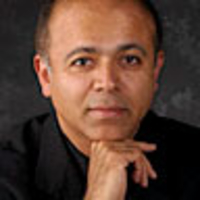
I like to think that every novel I read makes me a better physician, a better diagnostician—that’s my excuse to keep hanging out in bookstores. The truth is of course that I love reading novels for their own sakes. I want the escape they offer. But it is the make-you-a-better-diagnostician argument that I use with my medical students. I quote John Fowles to bolster my case. (Alas, the author of The French Lieutenant’s Woman and The Magus is not as well known to them as say, J.K. Rowling. It helps to mention that the French Lieutenant’s Woman was made into a motion picture with Meryl Streep and Jeremy Irons; nothing like a movie with well known actors to validate a book’s existence.) Fowles warned of a kind of “blindness” that might ensue if one had no practice in slipping down the “magical passages from the little signals we call words in to far richer worlds than any film.” He was talking about the collaborative act of the reader taking the words the writer provides on a page, feeding them into the retinae, then sending messages down the optic nerves and into the visual cortex, and then to God knows where in the rest of the brain to conjure up a rich fictional dream, a movie that feels like the reader’s very own creation. This act of intracranial-moviemaking renders us territorial. It explains why when a book we have enjoyed is really made into a movie, we often grumble about the casting because the actors’ faces never line up perfectly with the ones we conjured up in our minds.
Read Tina Brown’s interview with Abraham Verghese. Read an excerpt from Cutting for Stone.
It was an experience like that, a private movie I made in my head, that called me to medicine. I hadn’t really been around medicine that much, so how else could I as a child come to see medicine as this mysterious, noble, romantic and highly desirable quest? The book that triggered this for me was Somerset Maugham’s Of Human Bondage. There were others like it— The Citadel, Arrowsmith, Not As a Stranger—that managed to stir something in my adolescent soul, a sense that by entering medicine, one might acquire the respect and mystique of a priest without having to do the celibacy thing. I wasn’t the only one. Physicians of my generation and the one before ours often cited a book as being the calling to medicine. If it wasn’t Arrowsmith, then it was Paul de Kruif’s Microbe Hunters, or it was the tales of Dr. Tom Dooley’s life. What is surprising that there are very few novels I can point to in the ensuing years that I might have put in the hands of a college student with the hope of propelling them to medicine. Non-fiction, yes—Oliver Sacks, Atul Gawande, Richard Selzer and many others now. But fiction? And is watching House or Scrubs a substitute?
With my novel, I had an ambition to write a book of the kind I admired. The kind of book that allows you to feel you have entered a space capsule, traveled to another land, lived a full life, emerged with powerful lessons, and when you return, instead of a hundred years having gone by, it is still Tuesday. Arranged at eye level on the bookshelf in front of me were books of this kind where the writer had succeeded in doing just that.
I began with an image of a nun giving birth to twins. In the two camps of novel writing (as I understand them), I wasn’t in the camp of those who have a clear plot and a clear destination before a word goes on paper. I began with a voice that fit the image of the nun giving birth, and then I pushed the voice ahead. It was nerve wracking at times not to know what lay ahead, but the discoveries I made and then delivered to the reader felt fresher to me than if I had ordained them on a whiteboard ahead of time. There came a moment more than halfway through the book when I had to know and look ahead and clearly understand where all this was going—to have a plot, in other words. The relief, once I had that hammered out, was huge. I could write and focus on the language and the characterization. And still there were surprises, things that blossomed out and were better than anything I plotted out.
That’s what I think I will remember most about the experience of writing Cutting for Stone; that in the mysterious recesses of the brain, things stir and take shape, but they only do so when you are seated in the chair and trying to make sense of the world you created. Call it a muse, or call it neuronal connections and associations, but it is an act as miraculous as that of reading, the converse of reading since the mental movie pops up first and you are left trying to find the right words. I have a note on my wall that reads, “You must remember this.” It is a phrase that I have also used in every book of mine, and in a different context each time. But it is on my wall to remind me every time I looked up that the best part of the novel, the experience I wanted to remember, was that moment of looking up, of being caught in the mysterious act of writing, the sitting down in the chair and playing with what Fowles called the little signals we call words. You must remember this.
Dr. Abraham Verghese is senior associate chairman and professor of the theory and practice of medicine in the Department of Medicine at Stanford University. His nonfiction books, My Own Country, about AIDS in rural Tennessee, and, The Tennis Partner, were critically acclaimed.






